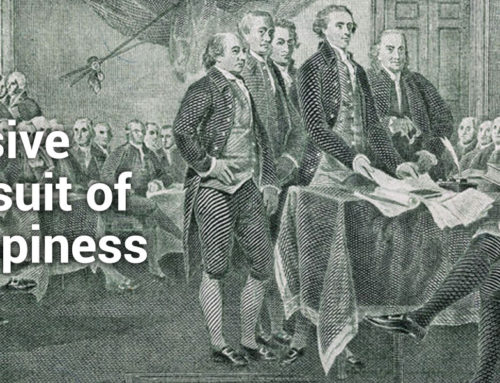Successfully performing each of the three phases of the Performance Trilogy® requires different attributes (i.e. talent and skills) during each phase. In STILE Point #15, we listed the universal attributes of leadership required during Phase 1, the strategy phase, where leaders attempt to “lead from the front” and change things. Changing the status quo as we all know is extremely difficult and requires 1) imagination to create a new future different from the present, 2) courage to challenge accepted practices despite strong resistance, and 3) strong communication skills to attract a legion of followers.
In STILE Point 17, we discussed the universal attributes of management required during Phase 2, the execution phase, where managers “lead from the middle” and make things work. In many ways, execution is even more challenging than strategy, as you must produce immediate and continuous results to build the confidence of your team. Producing results requires 1) conscientiousness, the talent and motivation to focus on the task at hand and see it through to completion despite obstacles, 2) organizational skills, the ability to efficiently and effectively process multiple tasks and information, and 3) analytical skills, the ability to diagnose and solve the myriad problems that arise during execution to put initiatives back on track.
In today’s STILE Point, we will complete the discussion on Leadership attributes with the universal attributes of coaching required during Phase 3, the development phase. In Phase 3, coaches “lead from behind” by developing the team during the execution of the strategy and building the trust of team members. Building trust requires 1) integrity, behavior that is honest and consistent in words and actions, 2) empathy, a genuine concern for the feelings and aspirations of others, and 3) teaching skills, the desire to learn the talents and motivations of others and stimulate their self-learning.
In STILE Point #7 we discussed the secret to sustainable leadership, gaining the trust of your team. When leading the strategy and managing the execution, it is all about you and achieving your goals. When coaching development, it is no longer about you but the success and development of your team. In the words of Jack Welch, “ before you become a leader, success is all about growing yourself. When you become a leader, success is all about growing others”. It is possible for leaders to succeed in the short term, despite a lack of integrity and genuine concern for the success of their team members. Over time however, this behavior catches up with them. Broken promises are not forgotten. Team members resent lack of recognition and career development. As a result, gaining support for new initiatives becomes increasingly more difficult. Leadership cannot be sustained without trust, and trust is gained not only by achieving your personal goals, but acting with integrity and genuine concern for the success and development of your subordinates and colleagues. When leading and managing, you “lead from the head” to advance your personal agenda. When coaching, you “lead from the heart” to support the agendas of others. In his excellent book True North, Bill George calls this “values based leadership”.
Integrity – Behavior that is genuine in words and actions
Integrity is the foundation upon which all trust is based. We may respect and admire successful leaders but only trust those leaders who are honest in what they say and consistent in how they act. While no one that I am aware of is a saint, there are several leaders who I had the fortune of working for who embraced a set of values and were very consistent in practicing those values. You always knew where they stood on most issues and could depend on their consistency. I may not have always agreed with their decisions but always respected the fact that they were true to their business ethics. An excellent source on the role of integrity in building trust can be found in Trust in the Balance, by Robert Bruce Shaw.
Consistency is an important element in building trust. When we observe inconsistency in what someone says or how they behave over time and different situations, we tend to question whether their motives are pure. I have always believed that one should never attribute malevolence to anyone when their actions can be more readily explained by incompetence or inattention. Unfortunately, it is human nature to mistrust those who do not act consistently. “Walking the talk” should not be just a slogan, but a way of life.
Consistency in sharing information. Do you willingly share information, both good and bad, that is important to your team? Are you honest with them if you do not have the answers? Do you let them know if you need to withhold information and when it can be released? If not, then the rumor mill becomes the primary source of information, often misguided, and mistrust builds among your team. Consistency has many facets.
Walking the talk – As I just mentioned, walking the talk is not a slogan but a first principle in demonstrating integrity. The reputation of a leader is highly dependent on telling the truth, not just what people want to hear. We tend to trust leaders who do what they say they are going to do and if unsuccessful, take responsibility. If you don’t follow through on your word, you most assuredly will develop a reputation of someone who cannot be trusted. While we live in a more complex world today, I can’t help but think of my father, who never signed a bill of sale or contract. His mantra was, “If my word and handshake are not good enough for you, we shouldn’t do business together.”
Consistency in location and time – Sharing information is not a one-time event. We are often sharing information to different groups, at different locations and times. The classic example is to listen to the stump speech of most national politicians as they traverse the country, with messages tailored to procure votes. It’s no wonder that politicians have one of the lowest trust ratings of any profession. Staff become very suspicious if you change your message based on your audience. Also, changing your message over time and shifting positions create mistrust. Staff look for a consistent sense of direction from their leaders. When changing ones message, great care needs to be taken in explaining the reasons for the change and the anticipated consequences.
Lest this all seems too esoteric, in his book, The Speed of Trust, Steven Covey points out the important competitive business advantages in trusting organizations.
Empathy – The willingness to walk a mile in another’s shoes
While there are many attributes of good leaders, the one attribute absolutely necessary to be a great leader is empathy. Most everyone I’ve met or read about in business espouses the concept of empathy. How often have you heard expressions like “the customer is always right” or “our people are our most important product”? The problem is that most of the time these are empty slogans that are preached but rarely practiced. Why is this so?
There are multiple relationships one can have with another person. In business, the elemental relationship is utilitarian (a day’s pay for a day’s work, a promotion and raise for a job well done). This is the prevalent mindset of many leaders despite their rhetoric. This attitude can buy a person’s arms and legs but not his heart and mind. At a higher level of awareness, very good leaders build relationships based on enlightened self-interest. If I train and develop a person, they can make a larger contribution to my cause or initiative. If I help someone, they may be able to help me in the future. This attitude can buy a person’s loyalty.
Finally, at the highest level, great leaders build relationships based not on self-interest but on altruism, a genuine, unselfish caring for someone or some cause with no expectation of return. This attitude builds trust bordering on devotion. Aristotle in his Nicomachean Ethics described this type of friendship as virtuous involving both good character and intellect. The concept is easier to understand when it is related to great leaders such as Jesus Christ, Gandhi, the Buddha, or Martin Luther King. On a scale of 1 to 10, where 1 is a utilitarian relationship and 10 is an altruistic relationship, where would you rate with your team members?
A great current example of how effective an altruistic leader can be is Arthur T. Demoulas, the CEO of Market Basket, the private supermarket chain. Despite decades of success in building the Market Basket, the Board of Directors fired him. While there were many undisclosed family disagreements, the official reason for his dismissal was essentially distributing too much of the company profits to the employees in the form of generous benefits including a profit sharing plan. His firing resulted in an unprecedented workers’ revolt. Hundreds of non-union warehouse workers and drivers jeopardized their livelihoods and refused to deliver produce to each of Demoulas’ 71 stores, thus crippling the supermarket chain. Employees also led a successful movement to boycott the stores. After several months, the company capitulated and as of this point in time has sold the company to Arthur.
What would cause employees to jeopardize their livelihoods and risk being replaced for their fired manager? Here are some of the quotes appearing in the August 27th edition of the Boston Globe that will shed some light on the matter. “”He’ll walk into a warehouse and will stop and talk to everyone because he’s genuinely concerned about them,” said Joe Schmidt, a store operations supervisor. “He cares about families, he asks about your career goals, he will walk up to part-timers and ask them about themselves. To him, that cashier and that bagger are just as important as the supervisors and the store management team.” Schmidt said Demoulas once called a store manager after he heard the man’s daughter was critically injured in a car crash. Demoulas wanted to know whether the hospital she was in was giving her the best care possible. “Do we need to move her?” he asked, Schmidt said. “He is just a good man,” Schmidt said. Demoulas is beloved by the workers not only for offering generous benefits — including a profit-sharing plan — but also for stopping to talk to workers, remembering birthdays and attending funerals of employees’ relatives. On my empathy scale described above, I would have to rank Arthur a 9 or even a 10.
Like Arthur T. Demoulas, truly great leaders listen, think, converse, and act empathetically the majority of the time. When listening to others, they focus both intellectually on what the person is saying, but also emotionally about what the person is feeling (i.e. listening from the heart as well as the head). When formulating plans, they factor in not only the potential outcomes but also the feelings and aspirations of others. When conversing with others, they hold their positions gently and try to understand the others’ point of view. Finally, their actions demonstrate genuine care for others. You know you are moving in the right direction when your heart warms knowing that you contributed to someone else’s success.
Teaching Skills – The ability to foster self-learning in others.
The last attribute of coaching is the ability to teach. Great coaches are great teachers, not in the grade school sense of imparting knowledge but in the professional sense of investing the time to truly understand the talent, motivation and aspirations of highly skilled individuals and providing peer-to-peer feedback. The coach’s role is to increase their subject’s level of awareness and guide them in the process of self-discovery. In my experience, coaches that have these teaching skills and motivation are the exception rather than the rule.
Many leaders make the mistake of assuming that they have nothing to teach to highly intelligent and educated staff. Nothing could be further from the truth. In fact, in my experience, it is just the opposite. Experts become that way by concentrating and focusing on their area of specialty at the expense of many other skills and behaviors that are needed in today’s complex organizational environment. Coaches identify leadership gaps in awareness and behavior to help highly professional staff gain the breadth of skills to compliment their tremendous depth in their primary field of endeavor. These could include the nine attributes of leadership I’ve included in the Performance Trilogy® including imagination, courage, communication skills, conscientiousness, organization skills, analytical skills, integrity, empathy, and teaching skills.
First and foremost, good coaches do their homework. They spend time getting to know the strengths, weaknesses, aspirations and motivations of their staff. They understand that an important part of their leadership responsibilities is placing their staff in positions to succeed, challenging them with meaningful assignments and supporting their development and growth. In a new relationship, the better one understands the aspirations of their staff, the more likely they are to guide their assignments and development.
Most all organizations recognize the importance of supervision and coaching and have sophisticated annual performance planning and development programs in place. “Management by objectives” has been proven to be one of the more powerful tools in management theory over the past 30 years when successfully practiced. Unfortunately, poor implementation of this practice has many questioning its effectiveness. Most managers oftentimes dread the annual performance review. However, when properly executed, the performance planning and review process is a highly effective way to balance the need for performance (what can you do for the organization?) with the need for personal accomplishment and growth (what can the organization do for you?). Good coaches facilitate this process with integrity, empathy and dialog. In my next STILE Point, I will further elaborate on 1) coaching to distinguish between coaching for performance and coaching for development, 2) why these two functions should be conducted separately and 3) my suggestions for transforming the role of Human Resources in organizations.



